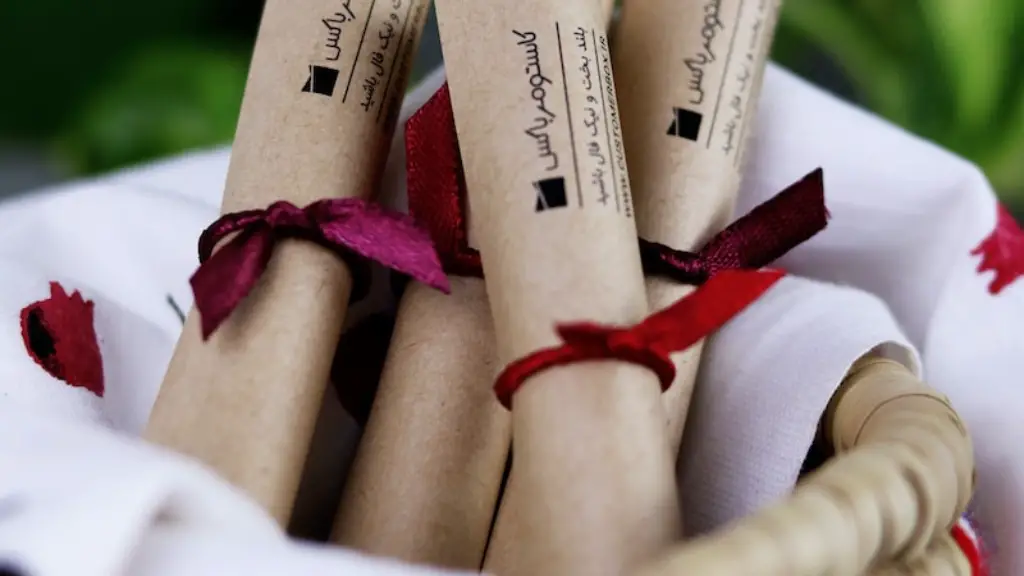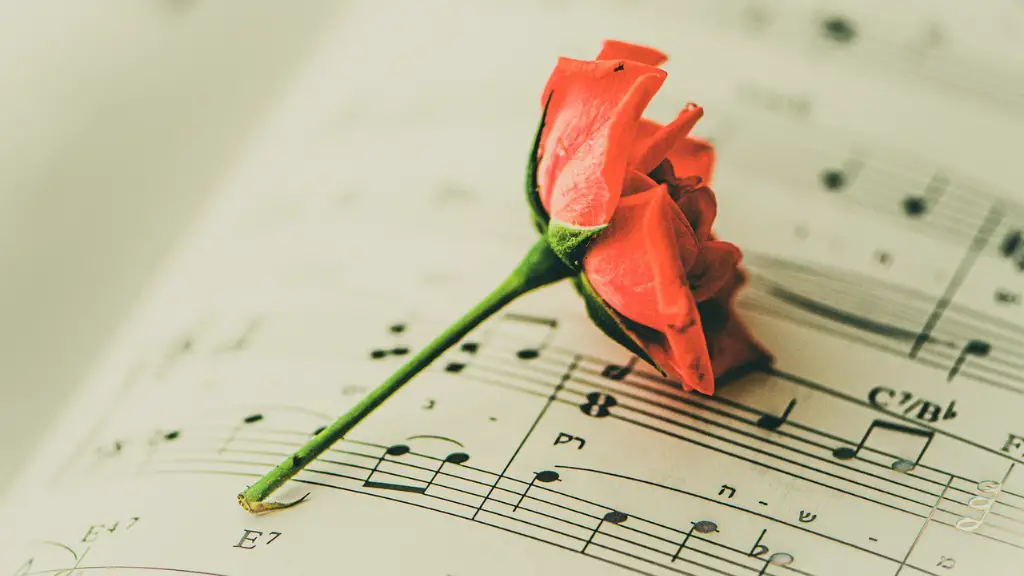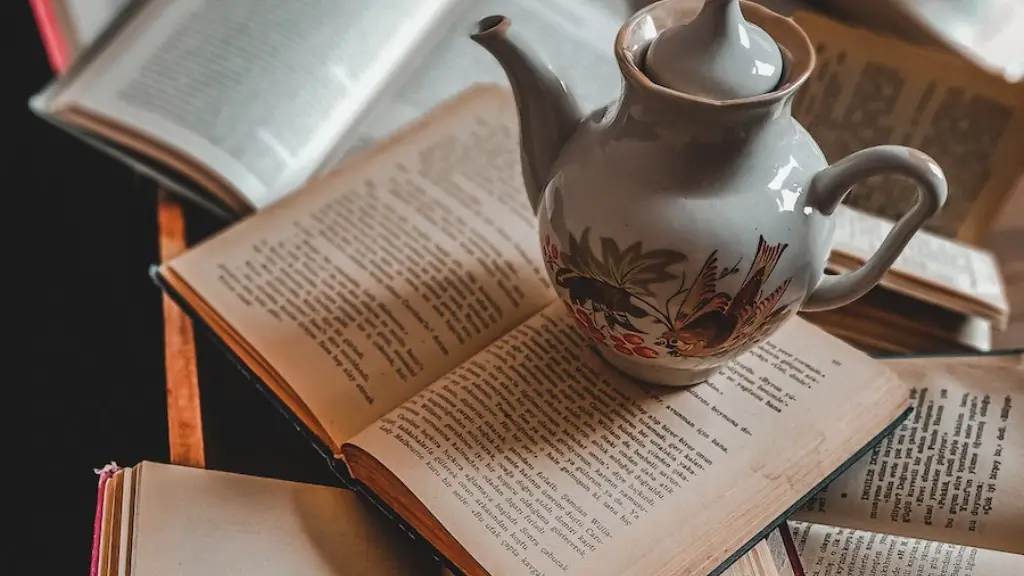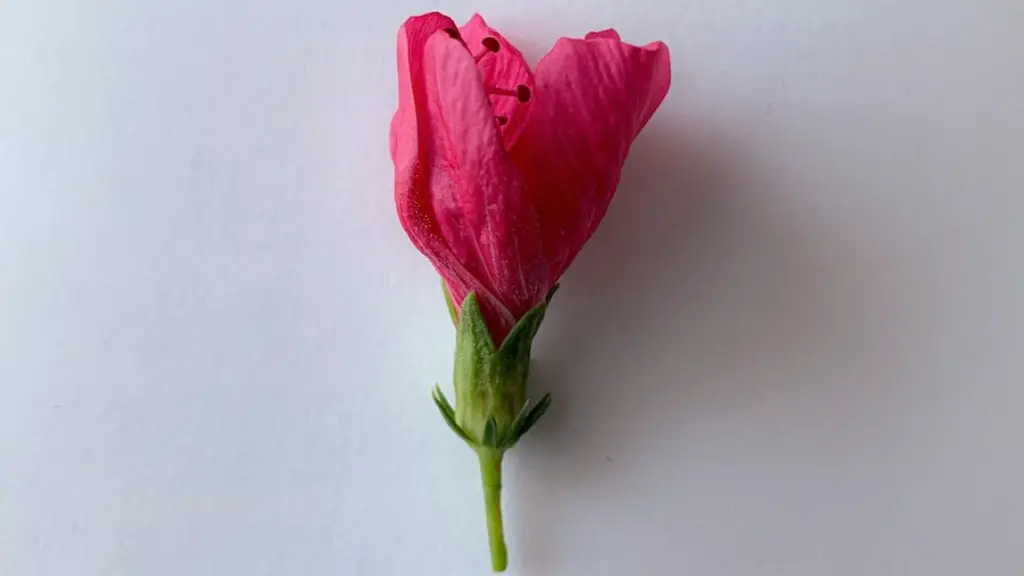Poets and writers often use various different techniques and figurative language to convey their desired meaning. Trochees are one of these techniques, and they are used to add rhythm, emphasis, and structure to a line of poetry. A trochee, pronounced “troh-kee”, is a set of two syllables in a line of poetry, with the stressed syllable first and the unstressed syllable second: ta-DA. These two syllables usually represent a complete thought or concept, and can be seen in popular poems like “The Raven” by Edgar Allan Poe or Robert Frost’s “Stopping by Woods on a Snowy Evening”. Trochees have been used in poetry since the time of ancient Greece and Rome, and they are still used today in traditional and modern poetry alike.
The use of trochees in poetry can give a poem more structure. Trochees help to break up a line of poetry into parts, by organizing it into two syllable sections. This can give a poem greater rhythm and flow, as the poet can control where the stress lands within each line. In addition, trochees can be used to emphasize certain words or ideas, by placing a stressed syllable on the word or phrase that the poet wants to emphasize. By doing this, the poet can make certain words stand out and draw attention to them; this can be used for various purposes, such as intensifying an emotion or idea.
Additionally, trochees play an important role in poetic metre. Metre is the arrangement of a poem’s syllables in patterns, with the goal of giving the poem a certain feel. For example, a poem with a regular metre pattern such as “iambic pentameter” uses a series of trochee syllables to create a rhythm. This rhyme pattern is used in some of the most famous poems ever written, including William Shakespeare’s sonnets. By writing in trochee metre, a poet can make a poem sound more fluid and give it a distinct feel.
In conclusion, trochees are an important element of poetry and play a role in shaping the way a poem sounds. Trochees are used to create structure, emphasize words and ideas, and add rhythm to a poem. By understanding how trochees work in poetry, a poet can create powerful, meaningful poems that convey the desired meaning to their readers.
How are Trochees Used in Different Types of Poetry?
Trochees can be used in many different types of poetry. In ballads, which often employ a regular metre pattern such as iambic pentameter, trochees are used to create a consistent rhythm throughout the poem. In haikus, which are three-line poems with a 5-7-5 syllable pattern, trochees are used to give the poem emphasis, as each of the three lines follow a trochee syllable pattern. In free-verse poems, which often do not follow a consistent syllable pattern, trochees are used to give structure to the poem and to emphasize certain words or lines. Trochees can also be used in any other type of poem, from traditional to modern forms.
Are There Any Common Types of Trochees?
Trochees can vary in length and pattern. The most common type of trochee is the “iamb,” which consists of two syllables, with the stress falling on the second syllable. Other types of trochees may have more syllables and vary in their stress patterns. For example, a “dactyl” consists of three syllables, with the stress falling on the first syllable. A “amphibrach” consists of three syllables, with the stress falling on the middle syllable. There are many other types of trochees, each with its own unique rhythm and feel.
What is the Role of Trochees in Modern Poetry?
The role of trochees in modern poetry has evolved over time. While trochees are still commonly used to give structure and emphasis to poems, modern poets often also use them as a tool to create unique rhythms and effects. By using a combination of different trochee types, a modern poet can create a unique rhythm and structure that is distinct from traditional poetry. For example, in rap and hip-hop music, the use of trochees helps to emphasize the words, and create a rhythm that makes the poem sound more captivating and interesting.
Are there any Rules to Keep in Mind When Using Trochees?
There are no hard and fast rules when it comes to using trochees in poetry. That being said, there are a few tips that can help guide a poet in their usage of trochees. First, it is important to think about the emotion or idea that the poet is trying to convey, and to use the trochees to emphasize the desired words or phrases. Second, it is helpful to consider the surrounding words and syllables in the line, as these can contribute to the overall feel and rhythm of the poem. Finally, it is important to experiment and find what works best for the poem, as each poet has their own unique style and use of trochees.
How do Trochees Compare to other Poetic Devices?
Trochees are part of a larger group of poetic devices known as metrical feet. These metrical feet are composed of combinations of syllables, with the stress placed at certain points in the word or phrase. Other metrical feet include iambs, anapests, amphibrachs, dactyls, and spondees. All of these devices have different uses and functions in poetry, and it is important to understand how each one works to create the desired effect. In general, trochees are used to create structure, emphasis, and rhythm in a poem. They can also be used in combination with other devices to create a more complex metre.
What Benefits does Using Trochees Offer?
Using trochees in poetry can offer several benefits. One benefit of employing trochees is that the poet can control the rhythm of their poem. By emphasizing certain words and syllables, the poet can make certain ideas stand out, or create a regular rhythm in the poem. In addition, using trochees can help to create a unique sound and feel in the poem that could not be done without them. Lastly, trochees can help to connect different parts of a poem, as they can create a sense of continuity between different phrases and ideas.
In what Ways can Trochees Add Emphasis to Poetry?
Trochees can be used to add emphasis to a poem in several ways. By placing the stressed syllable first, a poet can draw attention to certain words or phrases. This can be used to intensify an emotion or idea, or to create contrast between different lines or sections of the poem. Additionally, trochees can be used in combination with other poetic devices such as alliteration to add emphasis to certain words or phrases. In general, the use of trochees can help to convey a poet’s desired meaning and create a powerful effect.
What is the Value of Knowing How to Use Trochees?
Understanding how to use trochees can be invaluable for poets. By knowing how to use trochees, a poet can add more structure, emphasis, and rhythm to their poem. This can help to make a poem more powerful and captivating, and can also help the poet to convey their intended meaning more effectively. Additionally, understanding and using trochees can expand a poet’s repertoire and allow them to explore new poetic styles and possibilities.
How Can We Incorporate Trochees Into a Poem?
Incorporating trochees into a poem is not difficult, but it does require some practice and experimentation. When considering incorporating trochees, it is important to consider the words and phrases that one wants to emphasize, and then determine which type of trochee (iamb, dactyl, etc.) would be appropriate for the desired effect. Additionally, it can be helpful to consider the metre of the poem, and how the trochees will fit into the poem’s overall rhythm and flow. Once a poet is familiar with the different types of trochees, they can begin to experiment with incorporating them into their poems.



